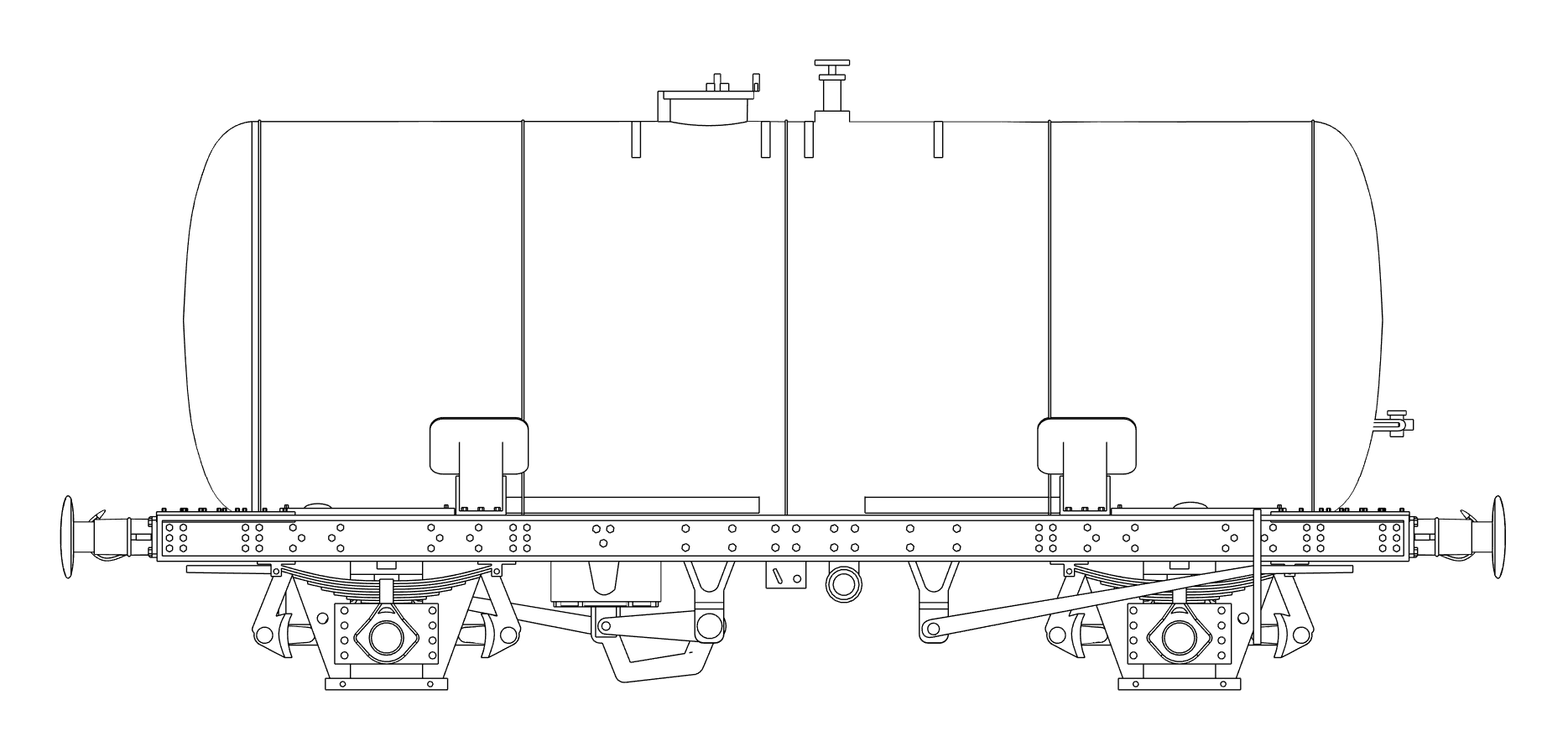Spend over £50 and claim 15% off with code 15OFF

35 Ton Class B Tank Wagon
35 Ton Class B Tank Wagon
£20.00
This highly-detailed model represents the quintessential 35-Ton Class B Tank Wagon, resin 3D printed with laser cut brass detailing for ladders and platforms.
They were a familiar sight across the British railway network from the late 1950s through to the 1990s. Developed immediately following the 1955 Modernisation Plan, these wagons were part of the first generation of large-capacity, high-speed tank wagons designed to replace smaller pre-war stock.1 Our kit provides the perfect blank canvas for modellers looking to recreate the diverse and colourful private-owner tank fleet that was so characteristic of the steam-to-diesel transition era.
This model is a vital piece of rolling stock for completing any period goods train, offering a historically accurate representation of mid-century British freight.
Birth of Capacity: The 35-ton tank was the result of collaboration between British Railways and major oil companies (such as Esso).2 It was one of the first wagons built with the maximum capacity possible on a four-wheeled chassis (35 tons Gross Laden Weight - GLW), moving away from the smaller 14-ton designs.
The "B" Classification: The 'Class B' designation is crucial—it meant the tank was certified to carry less volatile petroleum products (those with a flash point between 3$73^{\circ}\text{F}$ and 4$141^{\circ}\text{F}$ or 5$23^{\circ}\text{C}$ and 6$60^{\circ}\text{C}$).7 This differs from the 'Class A' tanks, which were reserved for highly flammable liquids like petrol.
Design & Builders: Many of these wagons were built by respected wagon manufacturers like Charles Roberts Ltd and Hurst Nelson.8 They were typically vacuum-braked when built, but many were later upgraded to air brakes (often receiving TOPS codes like TTB or TTV) to allow them to run in faster, more modern freight formations.
Service Life: These workhorses were integral to fuel supply and chemical traffic throughout the 1960s and 70s, making them ideal for British Rail layouts set in Era 5 (Late Steam/Early Diesel) right up to Era 7 (The BR Blue Era).
The "B Tank" classification defines its purpose, offering a wide range of authentic modelling options:
Non-Volatile Fuels: Most commonly used for bulk transport of Heavy Fuel Oil, Paraffin (Kerosene), Gas Oil, and White Spirit.
Industrial Liquids: Used for products such as Molasses, Coal Tar, and certain less volatile lubricating oils and industrial chemicals.9
The 35-ton Class B tank fleet was operated by numerous private owners, allowing for highly varied and authentic liveries:10
Company/Era | Typical Colour Scheme | Notes |
Esso | Black or Plain Grey Tank | Often with white lettering. These were major operators of the 35-ton design. |
Shell/BP | Plain Black | A very common and prototypical livery for their heavy oil and fuel oil traffic. |
Regent / Fina | Black Tank with White Markings | Another popular owner, often with highly visible corporate logos or branding. |
BR (Departmental) | Plain Black or Red Oxide | Wagons that were absorbed into British Rail's own non-revenue (departmental) stock, often used as water or oil carriers for internal purposes. |
Wartime/Early BR | Red Oxide or Plain Dark Grey | Suitable for a wagon in its original livery condition prior to the widespread TOPS system. |
If you have any questions, suggestions or requests don't hesitate to drop us an email at:
© 2025. All rights reserved.